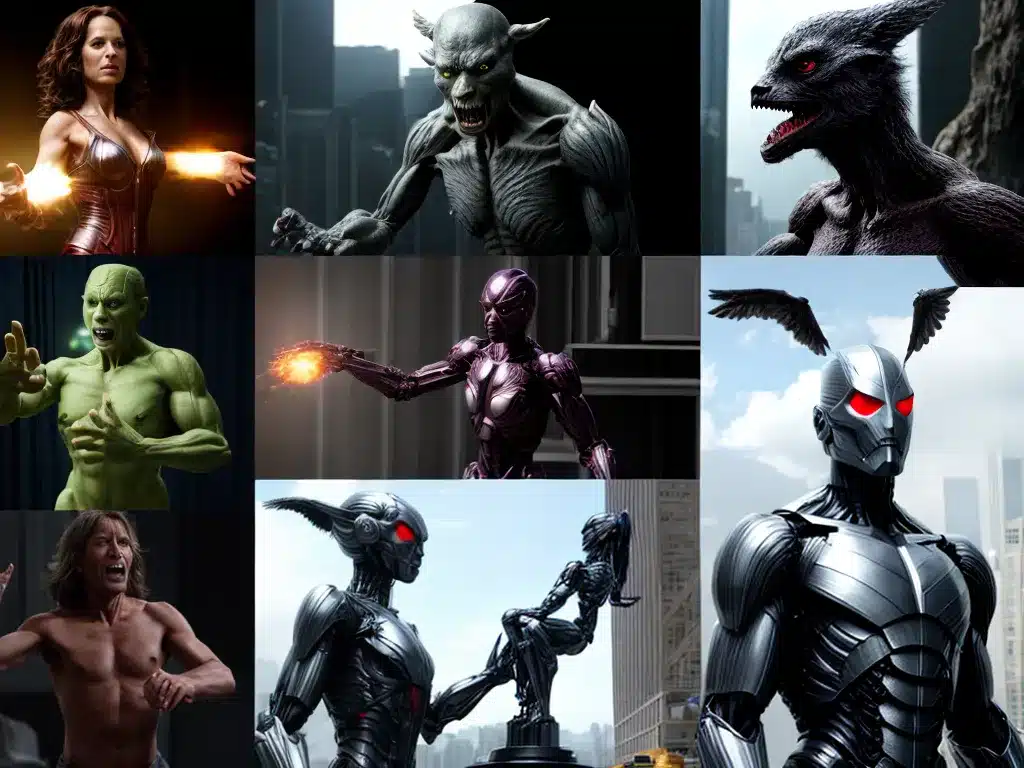Introduction
Visual effects (VFX) and computer-generated imagery (CGI) have become an integral part of filmmaking today. From fantasy and sci-fi spectacles to dramas and comedies, VFX helps bring movie magic to life. In this article, I will explore the evolution of VFX, examine how CGI has transformed moviemaking, and look at some of the most astounding VFX achievements in cinema.
A Brief History of Visual Effects
Visual effects have come a long way since the early days of cinema.
- The first VFX appeared in silent films like A Trip to the Moon (1902) which used simple in-camera effects and substitutions.
- In 1933, King Kong pioneered the use of stop-motion and rear projection. This opened the door for more advanced optical effects.
- The 1950s and 60s saw innovations like front projection, mattes, and traveling matte techniques. Films like 2001: A Space Odyssey (1968) showcased these new VFX wonders.
- The 70s and 80s introduced advanced motion control camera rigs. Movies like Star Wars (1977) and Terminator 2 (1991) demonstrated how VFX could create entire fictional worlds.
But it was the introduction of CGI in the 1990s that truly revolutionized VFX.
The CGI Breakthrough
- In early CGI, computers generated simple 2D animations and visuals. Tron (1982) was one of the first to use 15 minutes of CGI.
- As computing power increased, CGI could create more detailed 3D assets and environments. The Abyss (1989) had a stunning CGI water creature, marking a key VFX milestone.
- Terminator 2 (1991) was the first major film to extensively integrate CGI into live-action scenes with its T-1000 villain. This sparked a CGI revolution.
- By the mid-90s, films like Jurassic Park (1993) blended CGI and animatronics to bring photorealistic dinosaurs to life. Toy Story (1995) was the first fully computer-animated feature film.
CGI allowed filmmakers to create digital worlds, characters, and effects that were previously impossible. This opened the floodgates for CGI to dominate big-budget VFX films.
The Rise of CGI Spectacles
CGI has enabled movies to stage epic battles, craft alien worlds, and conjure supernatural forces in unprecedented detail. Here are some landmarks:
- The Lord of the Rings trilogy (2001–2003) used huge CGI armies and creatures alongside miniatures and makeup. This set a new standard for fantasy spectacle.
- Avatar (2009) generated immersive 3D CGI environments and characters using performance capture technology.
- Life of Pi (2012) seamlessly blended CGI animals with live-action actors using advanced compositing.
- Gravity (2013) utilized CGI to create photorealistic outer space scenes and immersive camera moves.
- The Jungle Book (2016) used CGI to build lush jungle environments and talking animals that were indistinguishable from reality.
These movies exemplify how CGI empowers filmmakers to vividly imagine fantastical worlds. The scope of what is possible with VFX has expanded exponentially thanks to continual innovations in CGI.
CGI Creatures and Characters
One of CGI’s most astounding applications is in creating artificial but believable creatures and characters. Here are some landmarks:
- Jurassic Park (1993) set a benchmark for CGI creature animation with its lifelike dinosaurs.
- Gollum in The Lord of the Rings (2001–2003) demonstrated realistic CGI character animation using motion capture.
- Avatar (2009) had huge leaps with full-body performance capture to animate fantastical CGI creatures.
- Rise of the Planet of the Apes (2011) showed how far facial motion capture had advanced with its sentient CGI ape.
- Thanos in Avengers: Infinity War (2018) reached new heights for CGI character detail, expression, and emotional depth.
CGI characters allow for nuanced performances and connections between the digital and the real. This humanizes otherworldly beings in ways once unthinkable.
CGI Magic in All Genres
Initially, CGI was most prominent in sci-fi, fantasy, and action spectacles. But today, CGI enhances storytelling across all genres:
- Titanic (1997) used visual effects to bring history to life by digitally recreating ship interiors and the infamous sinking.
- The Social Network (2010) added CGI to recreate Harvard dorms and campuses without location shooting.
- The Irishman (2019) pioneered “digital de-aging” to make actors look decades younger.
- The Lion King (2019) demonstrated photorealistic CGI by reimagining an animated classic with virtual sets and characters.
VFX gives filmmakers more options to tell all kinds of stories. CGI empowers visions both massive and subtle. The possibilities are now limitless.
The Future of CGI
So where does CGI go from here? Some emerging trends point to the future:
- AI and machine learning will enable more automated VFX processes to increase efficiency and cut costs.
- Real-time rendering will allow CGI previews on set and give greater creative flexibility.
- Virtual production using game engine tech will digitally recreate sets during filming.
- Photoreal digital humans will be commonplace as seen in films like Gemini Man (2019).
- Volumetric capture will make CGI characters and effects feel tangibly real.
As tools advance, the art of visual effects will continue to evolve. But the astonishing creativity enabled by CGI will no doubt persist in pushing cinematic storytelling to new frontiers.
Conclusion
From early in-camera tricks to today’s digital wizardry, visual effects have profoundly shaped filmmaking. The advent of CGI unlocked unprecedented potential to digitally manifest the imaginings of storytellers. VFX artistry has dazzled us with otherworldly spectacles. Meanwhile, subtler uses of CGI have enhanced all genres of cinema. As technology progresses, CGI will enable filmmakers to further transcend the limits of reality. The future of movie magic has never looked more astounding.













